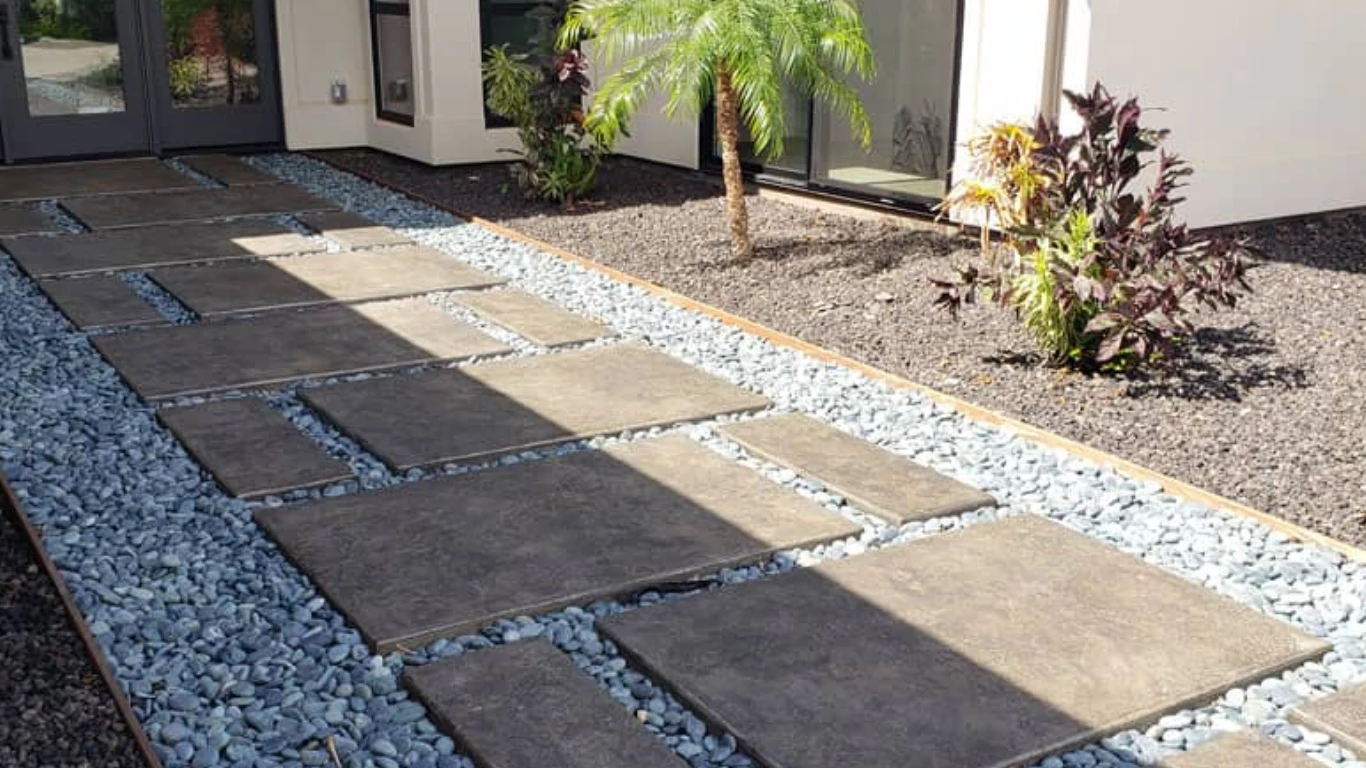When we think about what makes a neighborhood appealing, we often focus on the homes, the parks, the amenities, or even the landscaping. But there’s one element that quietly plays a crucial role in shaping the feel, flow, and functionality of a neighborhood that often goes unnoticed: concrete walkways. These simple pathways not only connect spaces but also serve as vital arteries in the urban landscape. They influence everything from pedestrian traffic and accessibility to the overall aesthetics of the area.
Concrete walkways may seem like small details in the grand scheme of neighborhood design, but their impact is anything but insignificant. Let’s explore how these paths, often overlooked, shape the communities we live in.
How Do Concrete Walkways Influence the Overall Flow of a Neighborhood?
A neighborhood’s flow is more than just traffic; it’s about how people move through the space. Concrete walkways are vital in helping pedestrians transition between homes, parks, schools, and commercial areas. Though often overlooked, these pathways are essential for maintaining a neighborhood’s rhythm.
Efficient Movement
Concrete walkways provide clear, direct routes for pedestrians. They reduce confusion and improve overall functionality by offering unobstructed paths to destinations like bus stops and parks.
Creating Safe Passage
Walkways separate pedestrians from vehicles, enhancing safety. They reduce the risk of accidents by ensuring people walk in designated areas away from traffic.
Connecting Different Areas
Walkways link residential areas to commercial spaces, schools, and parks. This connectivity fosters unity within the neighborhood and encourages community interaction.
Concrete walkways tie the various parts of a neighborhood together, allowing for smoother and more efficient movement and interaction between residents.
Why are Concrete Walkways Considered An Important Part Of Community Planning?
Pedestrian movement is a crucial element in neighborhood design. Concrete walkways balance vehicular traffic and foot traffic, making a community more accessible and livable.
Enhancing Walkability
Walkability boosts neighborhood livability, increasing property values and promoting activity. Walkways make it easier to reach essential services and amenities, improving the daily life of residents.
Promoting Health and Wellness
Concrete walkways encourage walking, helping residents maintain physical activity. They provide space for exercise, contributing to better physical and mental health for the community.
Environmental Impact
By reducing car dependency, concrete walkways cut down on traffic, pollution, and the carbon footprint. Walkable neighborhoods are more sustainable, with walkways promoting eco-friendly transportation.
Encouraging Social Interaction
Walkways foster face-to-face interactions among residents. They help build stronger community ties by making it easier to socialize, contributing to a greater sense of belonging.
Concrete walkways are not just infrastructure; they are investments in a neighborhood’s long-term quality of life.
In What Ways Do Concrete Walkways Affect Neighborhood Accessibility?
Concrete walkways improve accessibility, ensuring everyone—regardless of ability—can move through the neighborhood comfortably.
Universal Design
Concrete walkways are often designed with accessibility in mind, featuring smooth, level surfaces that accommodate mobility aids like wheelchairs and strollers. They ensure that the neighborhood is inclusive for all residents.
Improved Public Access
Walkways provide easy access to parks, community centers, and other public spaces. They eliminate obstacles, encouraging residents to use these shared spaces and strengthening community pride.
Transportation Connectivity
Walkways link public transportation hubs, reducing reliance on cars. By connecting residents to buses, trains, or bike paths, they promote sustainable transit options.
Safety and Navigation
Well-lit walkways and clear signage enhance safety, especially in larger neighborhoods.
These features make it easier for residents to navigate their surroundings.
Walkways directly shape how people move through and experience their neighborhood, creating an inclusive, practical, and safe environment for all.
How Can Concrete Walkways Impact The Look and Feel of a Community?
Beyond functionality, concrete walkways play a significant role in the aesthetic appeal of a neighborhood, influencing its overall feel and charm.
Cohesive Design Elements
Concrete walkways, when thoughtfully integrated into the neighborhood design, can enhance the aesthetic of the entire community. Decorative patterns or colored finishes can turn a simple path into an attractive feature.
Landscaping Integration
Walkways complement landscaping elements like gardens, trees, and benches.
They guide pedestrians through scenic areas, making the neighborhood more visually inviting.
Creating Visual Flow
Walkways direct the movement of people, helping to create a cohesive visual flow. Well-designed paths make the neighborhood feel organized and purposefully planned.
Aesthetic Appeal for Residents
Walkways increase property curb appeal by adding elegance and visual interest. This can lead to higher property values, benefiting homeowners and the broader community.
Concrete walkways do more than guide pedestrians; they enhance the visual and aesthetic quality of the entire neighborhood.
Enhance Your Neighborhood With Durable Concrete Walkways from RyanCo Concrete Construction
At RyanCo Concrete Construction, we understand the significant role that concrete walkways play in enhancing the functionality and beauty of your neighborhood. Whether you’re looking to improve accessibility, connect public spaces, or add a touch of elegance to your community, our expert team can design and install concrete pathways that are both durable and visually appealing.
Contact us and let’s create paths that connect, beautify, and strengthen your community!
